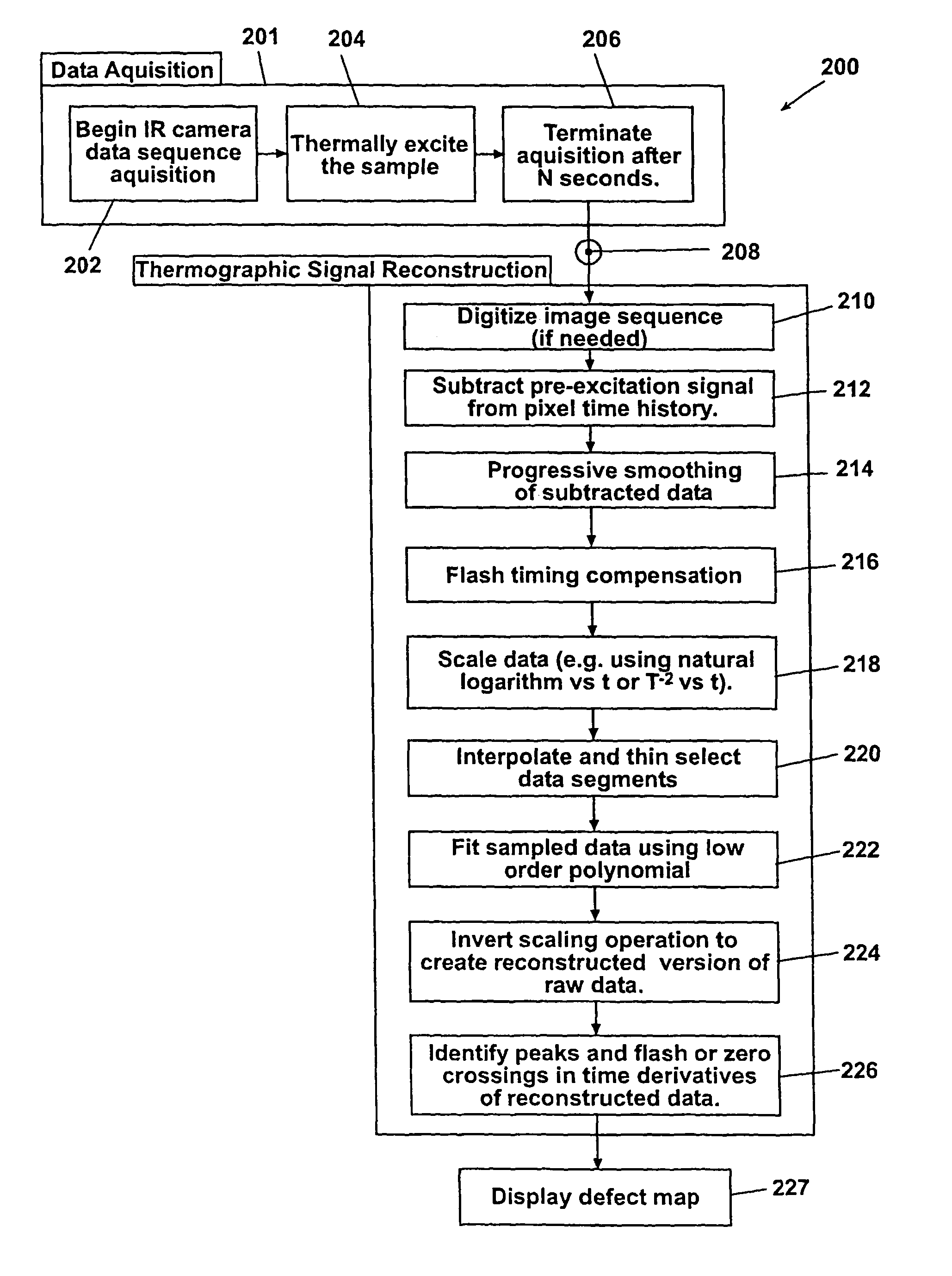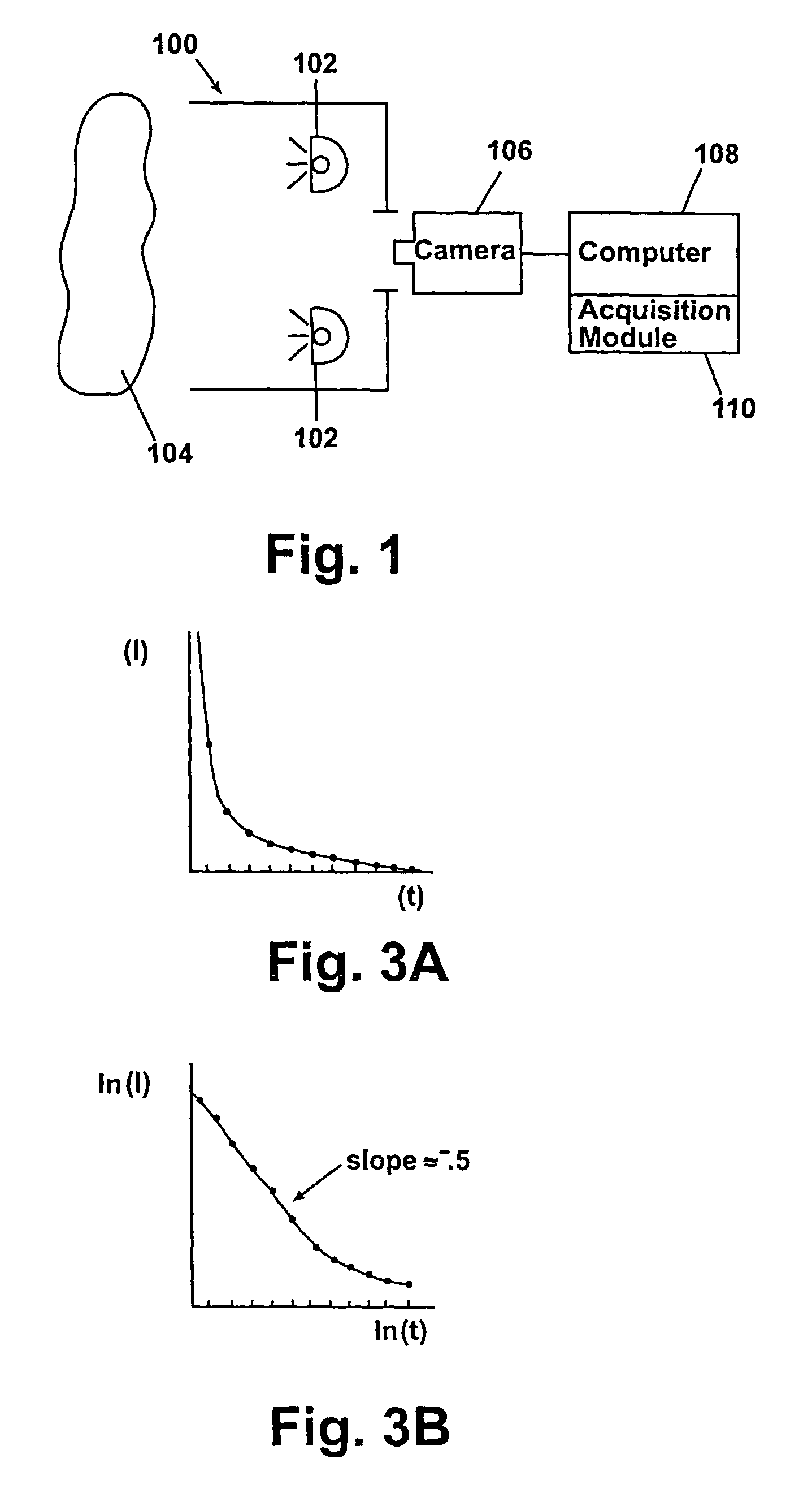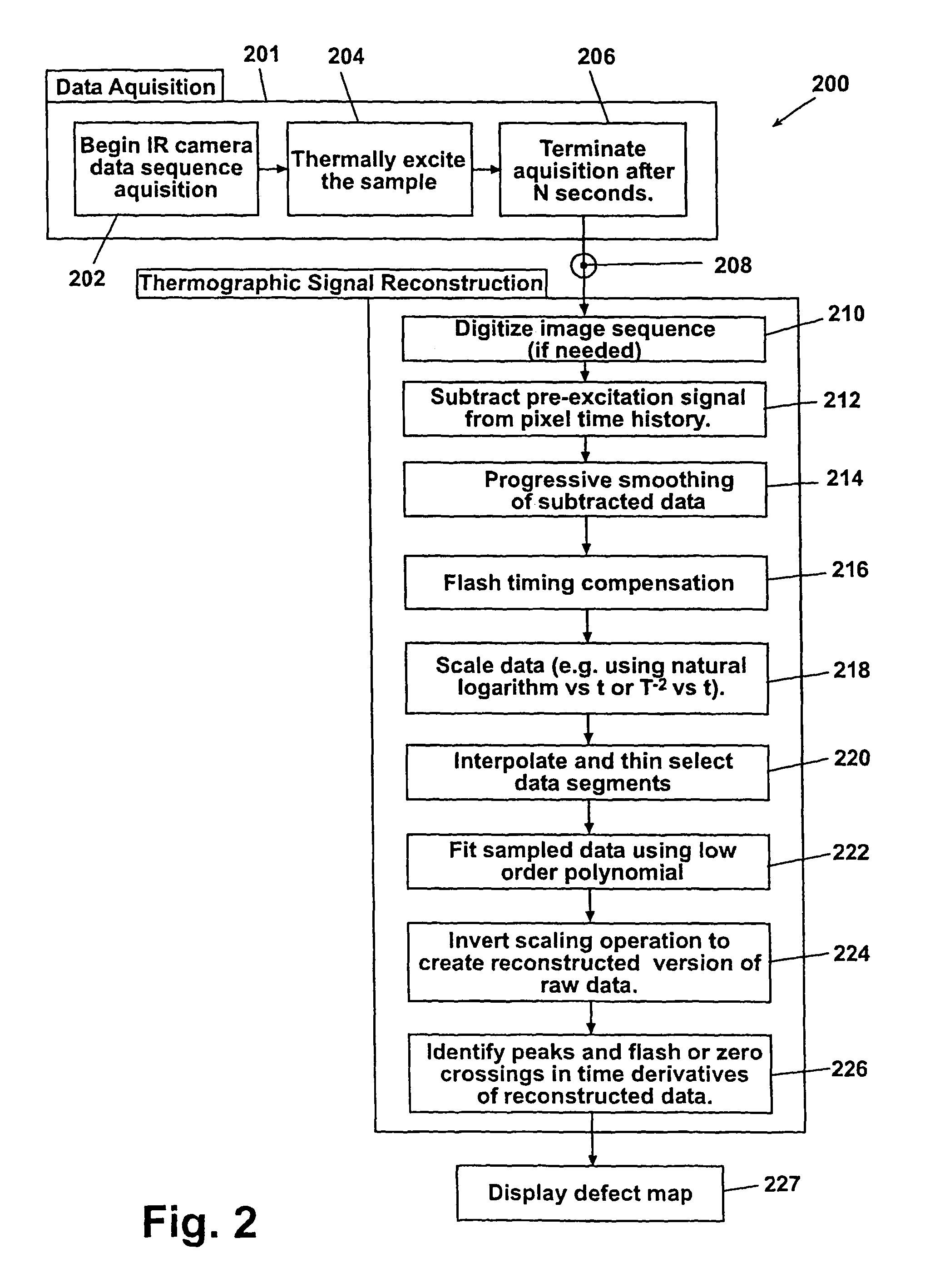More particularly, these defects cause the surface immediately above the defect to cool at a different rate that the surrounding defect-free areas.
However, as manufacturing processes and
safety standards requirements place higher demands regarding smaller / more subtle defect detection, these traditional methods become less effective because the small
signal levels associated with subtle defects are lost in the
noise, drift, and
instability that is inherent to
infrared cameras.
Also, visual defect identification methods tend to be subjective, and they do not readily and easily lend themselves to the automatic defect detection process.
Further, it is not possible to measure the depth of the defects simply by viewing the
infrared images.
These types of calculations, however, often require expensive
low noise, high-speed digital
infrared cameras.
Further, the cumbersome nature of having a computer attached to the camera for conducting calculations makes the combination impractical for applications outside of a laboratory, such as field inspections.
In addition to the data storage, memory and
processing problems noted above due to the
large size of the
infrared image data files, contrast-based methods require the identification of a defect-free region on the sample as a reference point.
This requirement is often not realistic for some samples if, for example, the size of the defect is larger than the infrared camera's
field of view.
In such a case, there is no defect-free area available that can act as a reference for a given region.
Further, if the entire sample exhibits a defect (e.g., a large
delamination running underneath the entire surface of the sample), there is no contrast between any region of the sample because the whole sample is equally or nearly equally defective.
If a defect (or group of defects) occupies a large portion of the
field of view, the contrast method is ineffective because a significant portion of the mean value result is composed of data derived from defective sample points which acts to reduce any appreciable difference between the defect area and the mean when the contrast value is calculated.
Further, in evaluating the results from both the contrast-based methods and the data obtained directly from the infrared camera, identifying the time at which a maximum peak slope occurs (indicating the presence of a defect) is often difficult because the signals are often inherently noisy, thus the contrast based method must be capable of discriminating between pixels associated with defects and pixels associated with
noise.
The peak slope may also be obscured if the instantaneous temperature of the sample exceeds the camera's peak temperature detection capabilities, causing an initial, highly nonlinear response from the camera due to camera saturation.
This approach, however, sacrifices spatial resolution to lessen
temporal noise.
Another approach for reducing
temporal noise is to average data over a selected number of consecutive frames, but this approach sacrifices temporal precision.
As a result, known techniques for reducing temporal and
spatial noise necessarily degrade temporal and / or spatial resolution and precision.
However, when one understands the underlying physical process of thermal imaging as well as the nuances of using all but the most expensive thermal imaging cameras, these approaches prove unsuccessful for several reasons:
Thermographic data (when generated using a pulse of energy to heat the sample), presents an extremely
large dynamic range thereby making it extremely difficult to accurately fit both the data occurring early in the sampling process (large amplitude) and later in the sampling process (
small amplitude).
However, such high order terms introduce undesirable errors (such as oscillations) in the polynomial fit later in the time-temperature sequence when in fact the data is not oscillatory but rather stable.
As a result, the
signal generated during this portion of the imaging exercise is often highly non-linear.
The early,
high amplitude, data points dominate the fit and worsen the fit for later occurring data points.
The difference between the thermal response of an intact point (i.e. a
defect free portion of a sample) and the thermal response of a sub-surface defects is often very small (e.g. on the order of the temperal noise) and accordingly very difficult to identify.
A
defective component may fail to be “in spec” not because of a discreet defect, but rather because of distributed defects caused by process variables or problems due to tooling or material composition.
If the
thermal emission patterns of the two specimens deviate from one another more than a predetermined amount, the production specimen is deemed defective.
Although the advantages associated with automated inspection are obvious, there are various challenges posed by automated inspection of thermal images.
Thus, these
software routines will render inaccurate results if the orientation (rotation or translation) of the production image differs from that of the “
gold standard” image.
Although this approach is effective in some applications, it has several notable drawbacks.
Accordingly, this approach does not lend itself to discriminate between a sample that is “all good” or “all bad” even though it is often highly desirable to be able to discriminate in this way.3. Comparison of two samples can only be accomplished by image-to-image comparison of each image “slice” in the corresponding data sequence of each sample.
This approach is not only cumbersome but lends itself to inaccuracies (if the images contain temperature or temperature contrast data).
These inaccuracies arise primarily because it is very difficult to establish repeatable temperatures from shot-to-shot (inasmuch as temperature is highly dependent on ambient conditions,
heat energy input,
energy distribution and other factors).
Although this type of information is very useful in terms of physical dimensions or determining whether or not there are defects in the sample, it is entirely possible that a sample could be defect-free and yet still be sufficiently deficient to warrant rejection.
For example, a specimen could be compositionally different (e.g. a mixture in the fabrication process was incorrect), or it could contain an excessive amount of
porosity (pores that are too small to be resolved thermally, but that effect the density of the sample).
 Login to View More
Login to View More 


